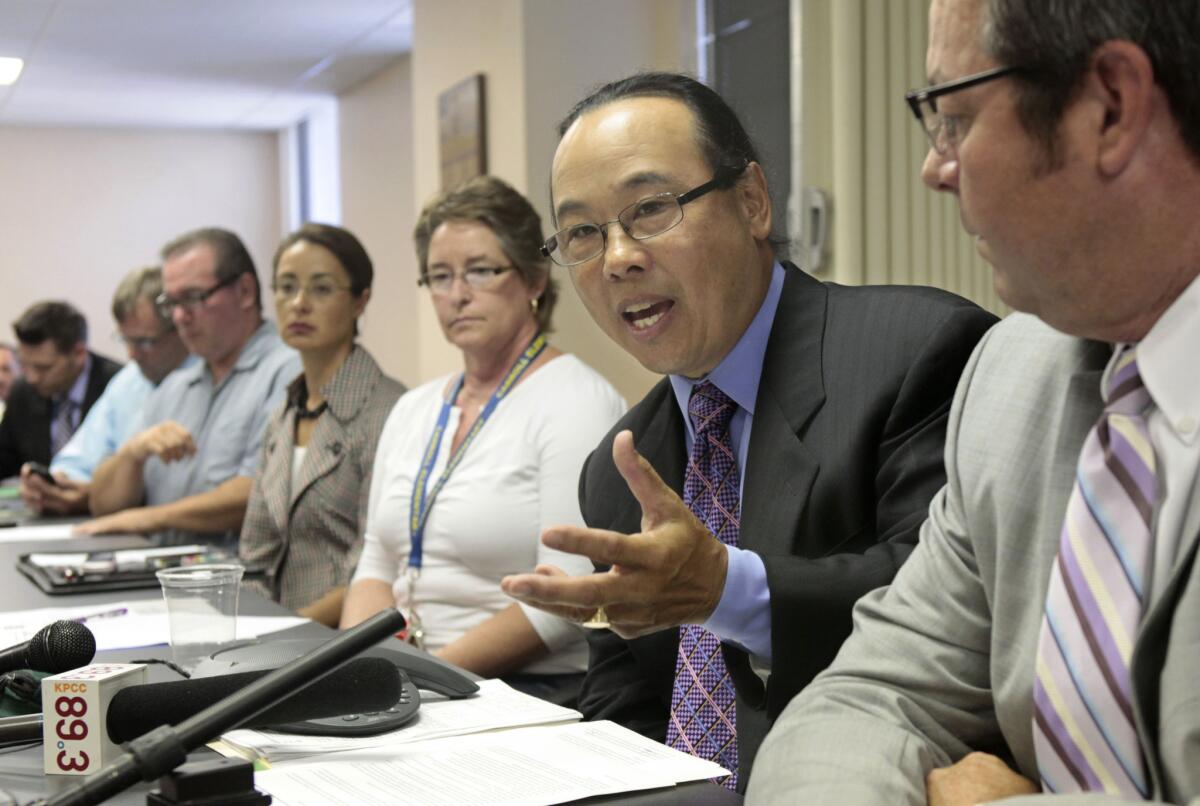California’s sad pension saga

When California’s government employee pension system was established in 1932, it was a model of restraint. Private-sector pensions were still rare then, but California lawmakers had a particular reason for wanting a public-sector pension system: Without one, unproductive older workers had an incentive to stay on the job and just “go through the motions” to get a paycheck, as a 1929 state commission put it. Pensions would encourage those workers to retire. The commission cautioned, however, against setting a retirement age so low that it would “encourage or permit the granting of any retirement allowance to an able-bodied person in middle life.”
Accordingly, California set its initial retirement age for state workers (and, beginning in 1939, for local government employees) at 65, at a time when the average 20-year-old entering the workforce could expect to live for another 46 years, until age 66. The system’s first pensions were modest, though far from miserly. An employee’s pension equaled 1.43% of his average salary over his last five years on the job, multiplied by the total number of years he had worked. That formula typically provided longtime workers with pensions equal to half or more of their final salaries.
The pensions were funded by three sources: contributions from employers (that is, state and local governments); contributions from employees (though some governments opted to cover that expense); and money that the pension fund would gain by investing those contributions. With the 1929 stock market crash in mind, California opted for a cautious investment approach.
“An unsound system,” the 1929 commission warned, would be “worse than none.” The employees’ contributions were fixed, so if investment returns weren’t sufficient to fund the promised pensions, the employers’ contributions would have to increase to make up the difference.
In the decades since, that cautious approach has been virtually abandoned as public employee unions have taken control of the system. The retirement age has been lowered, benefits have been increased and investments have become far riskier.
The major changes began in the late ‘60s, during a time of rapidly growing public-sector union power. In 1968, the Legislature added one of the most expensive of all retirement perks — annual cost-of-living adjustments — to CalPERS pensions. Other enhancements followed, including, in 1970, a far more generous pension formula that would allow an employee who worked for 40 years to retire at 60 and collect an annual pension equal to 80% of his salary. If he kept working for another five years, his pension fattened to 90%. In 1983, public safety workers got an even better pension formula, and the age at which they could start collecting was dropped to 55.
Not surprisingly, the costs of the enlarged pensions weighed heavily on California’s budget. In 1991, with the nation mired in a recession and the state in a fiscal crisis, the Legislature closed the existing pension system to new workers, for whom it created a second tier. This less-expensive plan no longer required workers to make pension contributions, and it lowered the value of the pension to 1.25% of final average salary for every year worked; further, a worker couldn’t begin to receive the pension until age 65.
But that economy lasted only until 1999, when the fund’s board concocted an astonishing proposal that would take all the post-1991 state employees and retroactively put them in the older, more expensive pension system. The initiative went further, lowering the retirement age for all state workers and sweetening the pension formula for police and firefighters even more.
CalPERS wrote the legislation for these changes and then persuaded lawmakers to pass it. In pushing for the change, though, the pension fund downplayed the risks involved. A brochure about the proposal that CalPERS handed to legislators read like a pitch letter, not a serious fiscal analysis. It didn’t mention that state law protected government pensions, so that taxpayers would be on the hook for any shortfall in pension funding. In essence, the CalPERS position was that government workers should carry zero risk, sharing the bounty when the fund’s investments did well but losing nothing if investments went south.
During that period, many local governments tried to keep pace with the state, allowing earlier retirements, raising the percent of income paid upon retirement and decreasing contributions from employees.
The retirement system’s projections that it could afford all these changes relied on an 8% return on the money it held, which proved impossible, in part because of the economic downturn and in part because of bad investment decisions. That has left governments on the hook to meet the shortfalls. CalPERS has delayed much of the reckoning by shifting costs down the line, but that only means government budgets are likely to be enslaved to pension debt for decades to come.
Already, local governments are taking a huge hit. Glendale, for example, has seen its annual pension bill rocket from $1.3 million in 2003 to $13.7 million in 2007. San Jose’s tab almost doubled, from $73 million in 2001 to $122 million in 2007, and then rose even faster over the next three years, hitting a jaw-dropping $245 million in 2010. San Bernardino’s annual pension obligations rose from $5 million in 2000 to about $26 million last year. The state budget took a massive hit too: Its pension costs lurching from $611 million in 2001 to $3.5 billion in 2010.
In August, California did pass modest pension reforms, which apply mostly to workers hired starting this year. But Gov. Jerry Brown’s proposal to reshape the board of CalPERS in a way that would have made it more responsive to taxpayer concerns did not make it into the reform legislation.
CalPERS’ advocacy for higher benefits and its poor investment performance in recent years have locked in long-term debt in California and driven up costs, problems for which there are no easy solutions. As former Schwarzenegger administration economic advisor David Crane, a Democrat, has said of the fund’s managers and board: “They are desperate to keep truths hidden.”
Steven Malanga is senior editor of the Manhattan Institute’s City Journal, from which this article is adapted.
More to Read
A cure for the common opinion
Get thought-provoking perspectives with our weekly newsletter.
You may occasionally receive promotional content from the Los Angeles Times.










